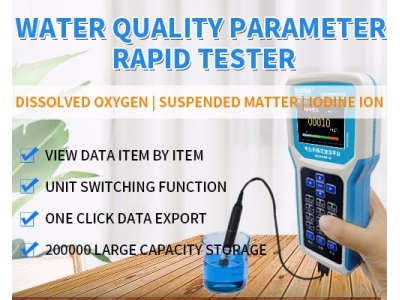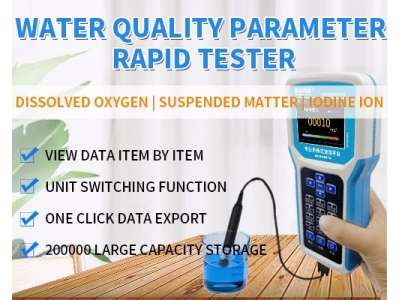A portable water quality monitor is a versatile and essential tool used to assess the condition of water in various settings. From environmental monitoring to industrial applications, these devices play a crucial role in ensuring water safety and quality. This article aims to explore the diverse uses of portable water quality monitors, their importance in different sectors, key features, and maintenance practices.

Importance of Water Quality Monitoring:
Water is a precious resource that sustains life and ecosystems on our planet. The quality of water directly impacts human health, aquatic life, agriculture, and industrial processes. Monitoring water quality is essential to identify pollution sources, track changes over time, and implement appropriate measures to protect water resources. Portable water quality monitors provide real-time data on key parameters, enabling prompt decision-making and intervention when needed.
Uses of Portable Water Quality Monitors:
Environmental Monitoring:
One of the primary uses of portable water quality monitors is in environmental monitoring programs. These devices are deployed in rivers, lakes, and coastal areas to assess water quality parameters such as pH, dissolved oxygen, conductivity, turbidity, and temperature. By continuously monitoring these parameters, scientists and environmental agencies can track the health of aquatic ecosystems, detect pollution events, and evaluate the effectiveness of remediation efforts.
Drinking Water Analysis:
Portable water quality monitors are utilized by water treatment facilities, regulatory agencies, and field technicians to monitor the quality of drinking water sources. Parameters like chlorine levels, total coliform bacteria, turbidity, and pH are monitored to ensure compliance with drinking water standards and regulations. Rapid testing capabilities of portable monitors allow for quick assessment of water quality in remote or emergency situations.
Aquaculture and Fisheries Management:
In aquaculture facilities and fisheries management, portable water quality monitors are used to monitor parameters critical to the health and productivity of aquatic organisms. Measurements of dissolved oxygen, ammonia, nitrate, and pH help aquaculturists maintain optimal conditions for fish growth and prevent water quality-related diseases. Monitoring water quality in hatcheries and grow-out ponds is essential for sustainable aquaculture practices.
Industrial Applications:
Various industries rely on portable water quality monitors to ensure process efficiency and compliance with environmental regulations. For example, in food and beverage production, these devices are used to monitor water used in processing, cleaning, and product preparation. Similarly, in wastewater treatment plants and industrial facilities, portable monitors help optimize treatment processes, detect contaminants, and minimize environmental impact.
Key Features of Portable Water Quality Monitors:
Multi-parameter Capability: Portable water quality monitors often measure multiple parameters simultaneously, providing comprehensive insights into water quality. Common parameters include pH, conductivity, dissolved oxygen, turbidity, temperature, and specific ions.
Portability and Durability: Designed for field use, portable water quality monitors are compact, lightweight, and rugged. They are equipped with robust sensors, waterproof casings, and long-lasting batteries, making them suitable for outdoor and harsh environments.
Data Logging and Connectivity: Many portable monitors feature data logging capabilities to store measurements for later analysis. Some models also offer wireless connectivity options, allowing real-time data transfer to a central database or cloud platform for remote monitoring and analysis.
Calibration and Maintenance: Regular calibration and maintenance are essential to ensure the accuracy and reliability of portable water quality monitors. Calibration procedures should follow manufacturer guidelines, and sensors should be cleaned and stored properly after each use.
Conclusion:
Portable water quality monitors are versatile tools with diverse applications across environmental, industrial, and research sectors. By providing real-time data on key water quality parameters, these devices help safeguard human health, protect ecosystems, and support sustainable water management practices. Understanding the uses, features, and maintenance requirements of portable water quality monitors is essential for maximizing their effectiveness and ensuring accurate and reliable water quality assessments. Continuous advancements in sensor technology and data analysis capabilities will further enhance the utility of portable monitors in addressing water quality challenges worldwide.






